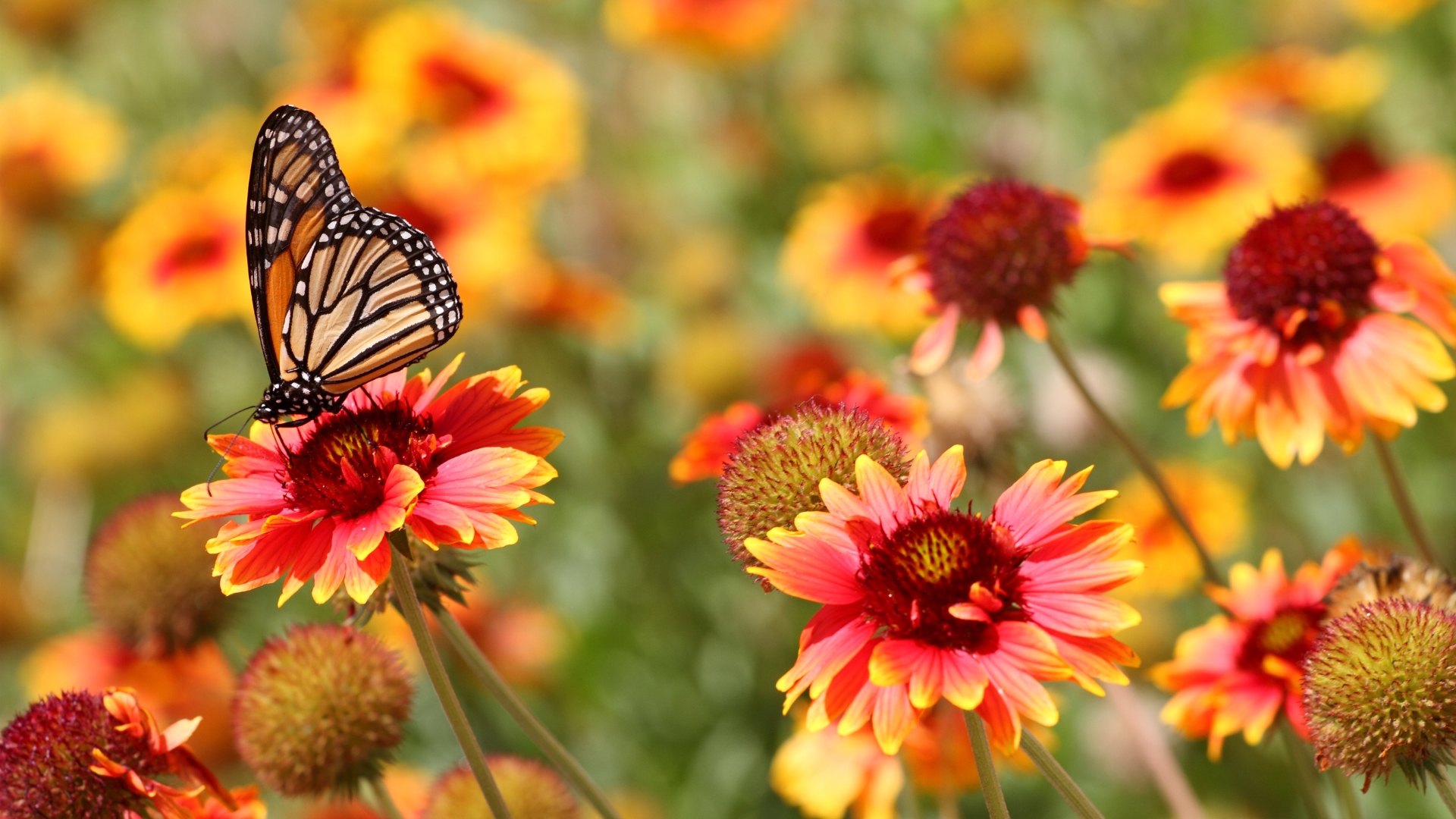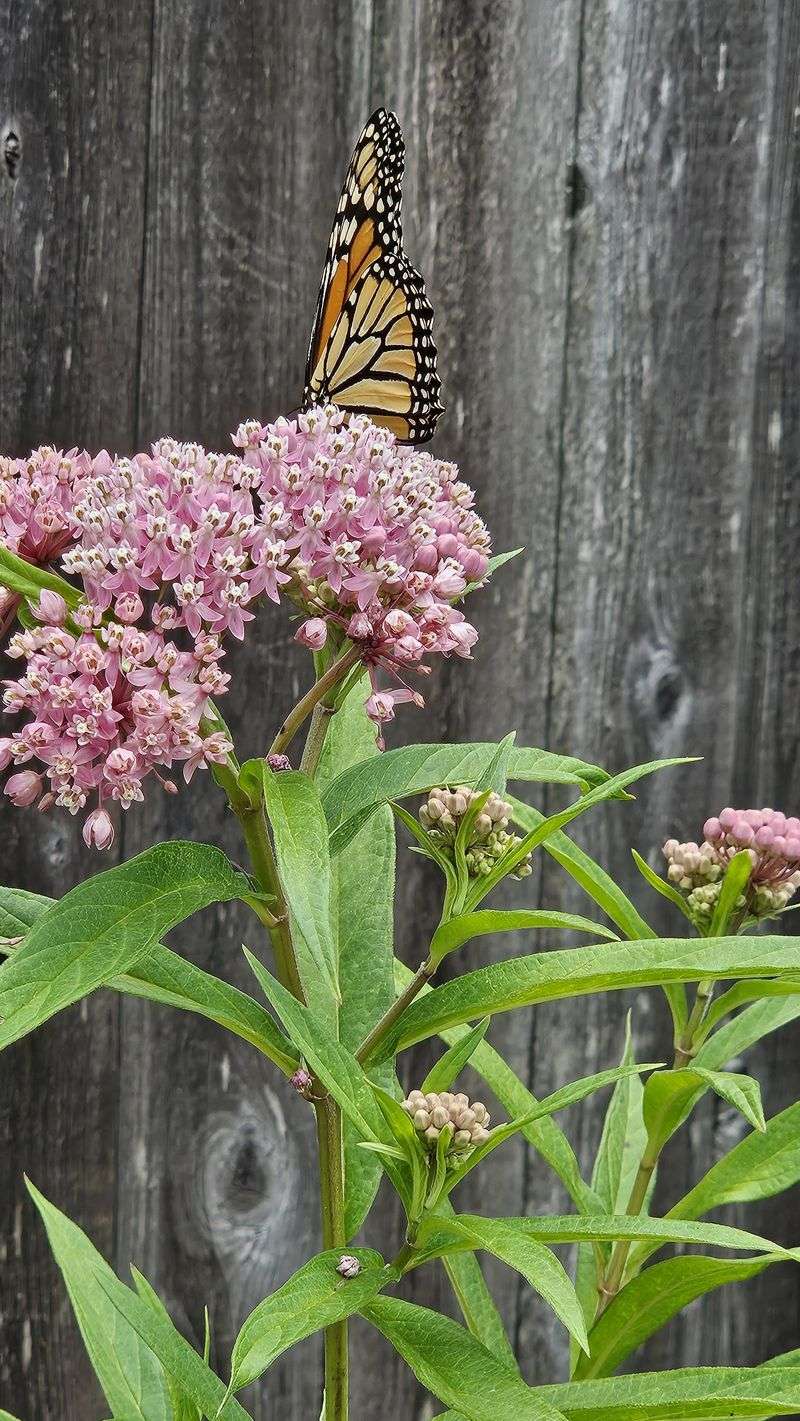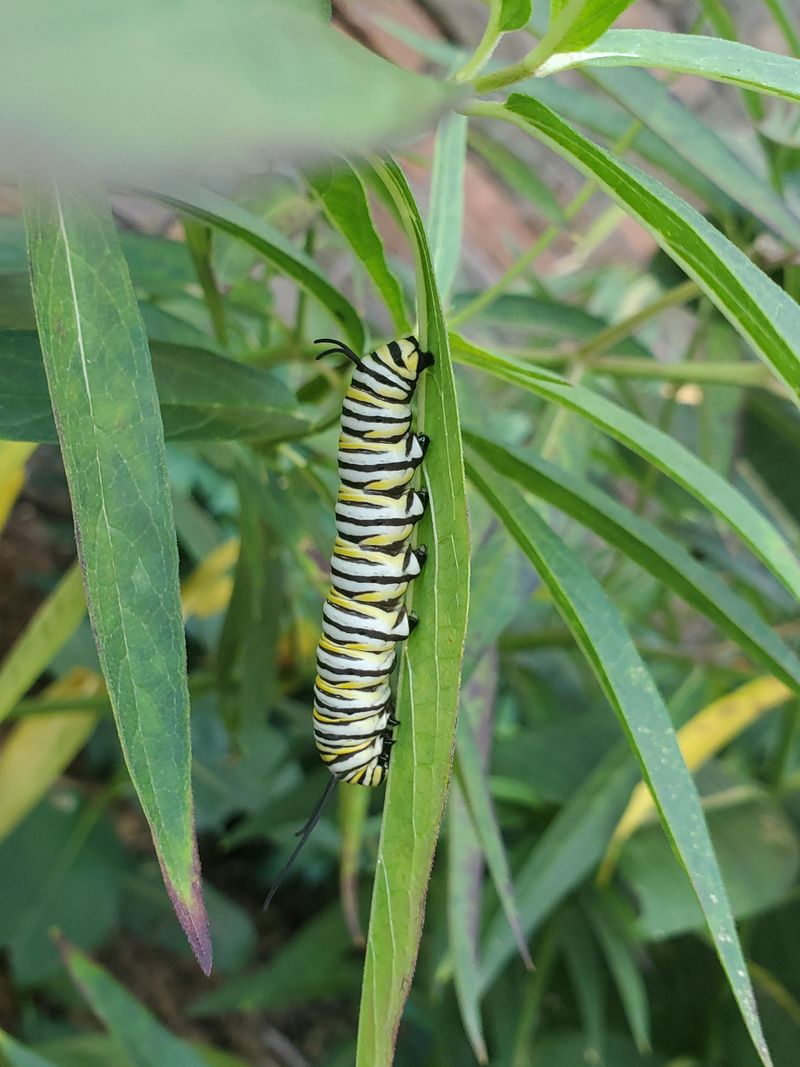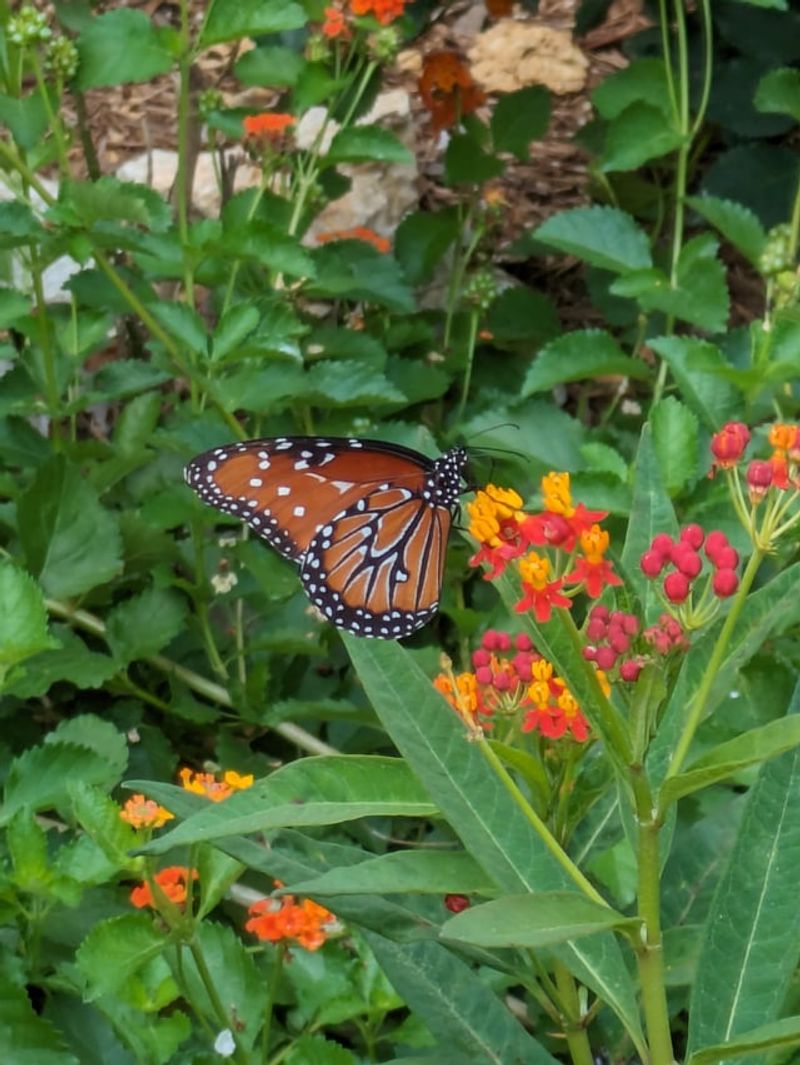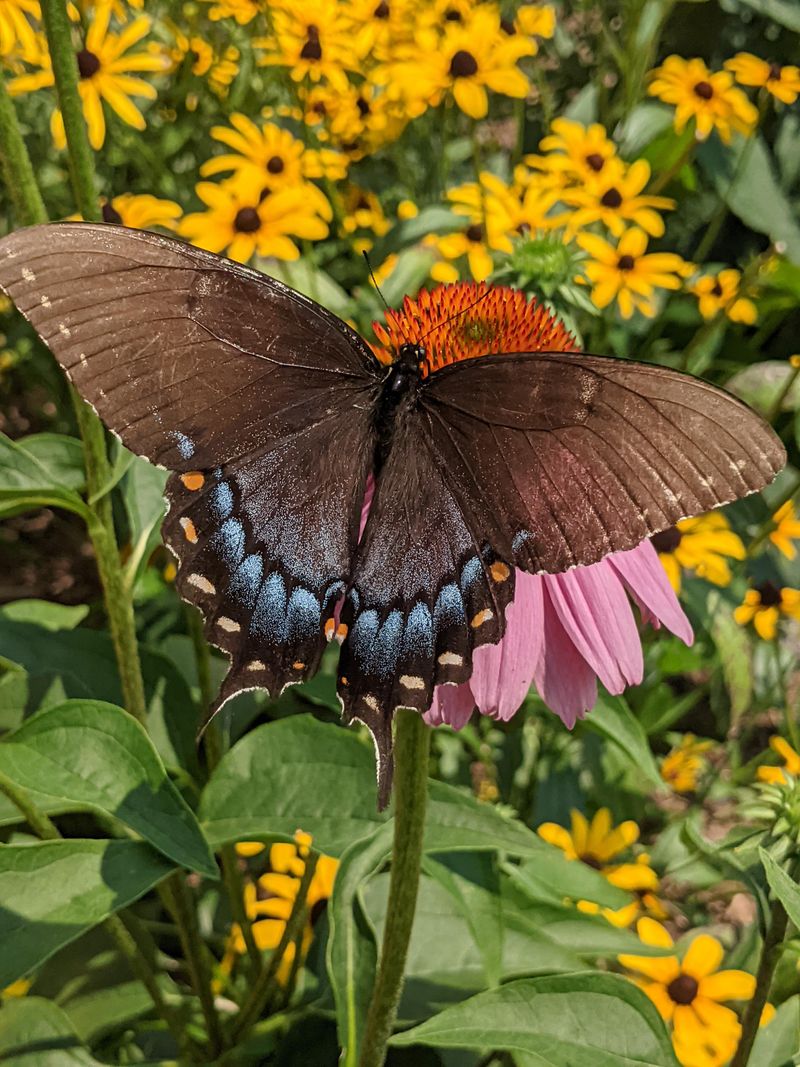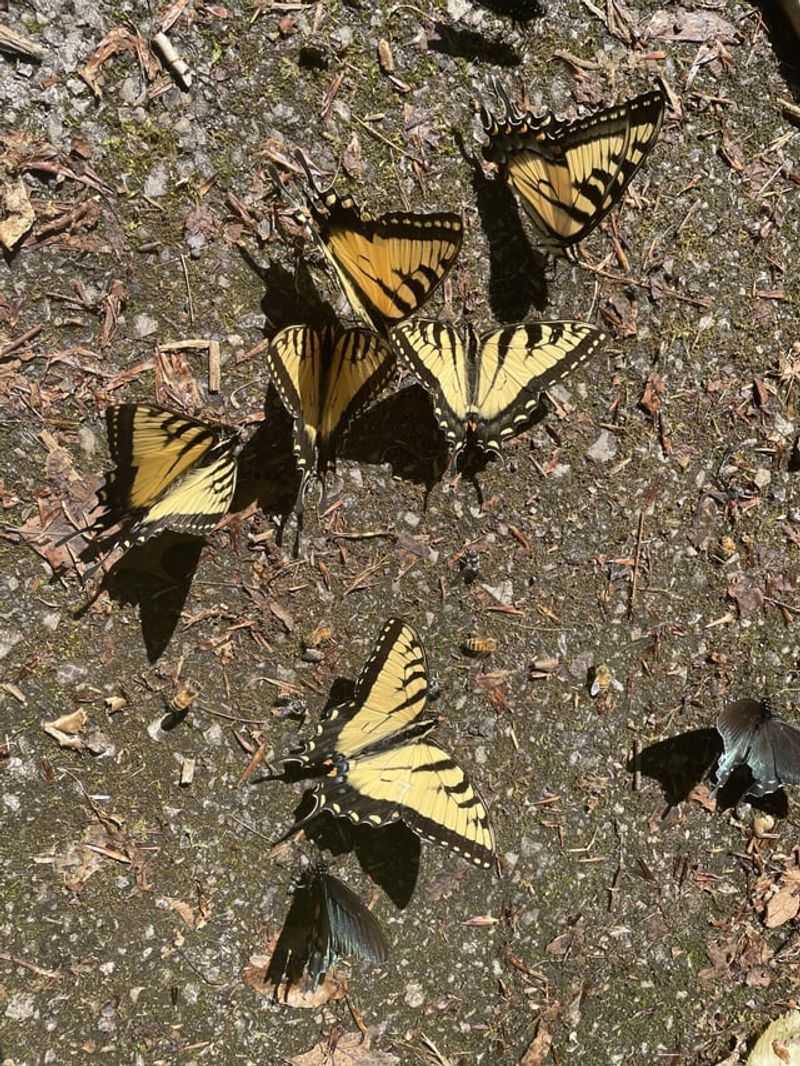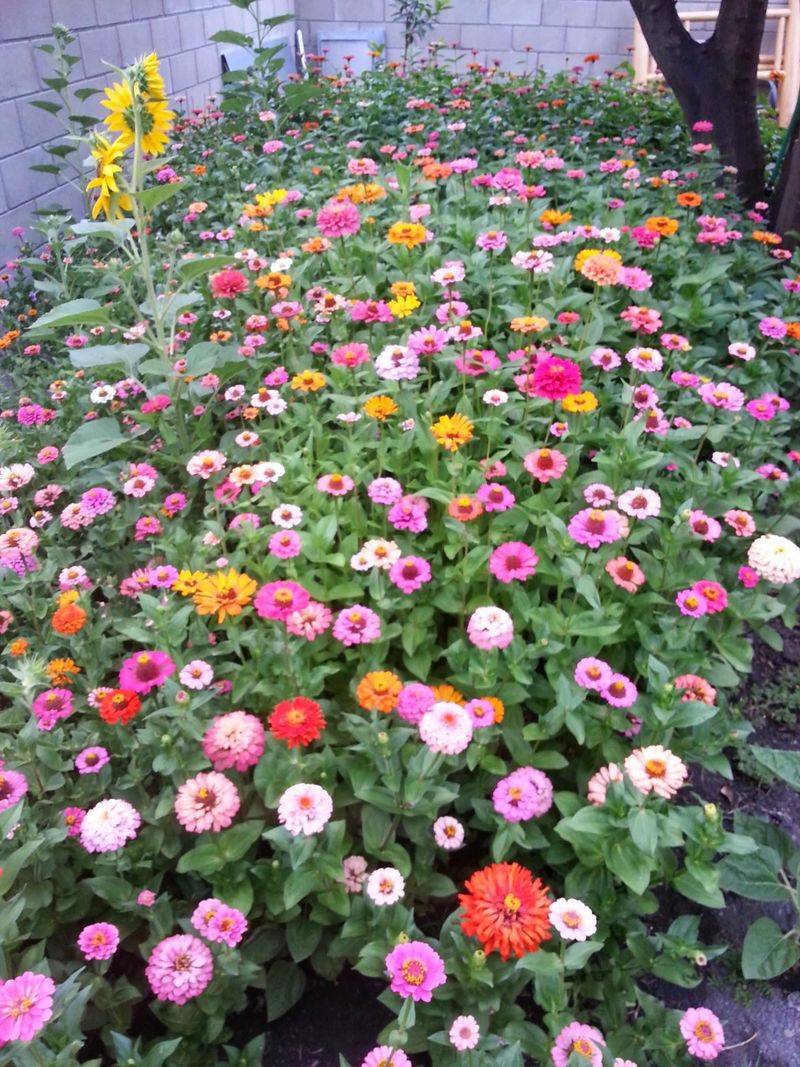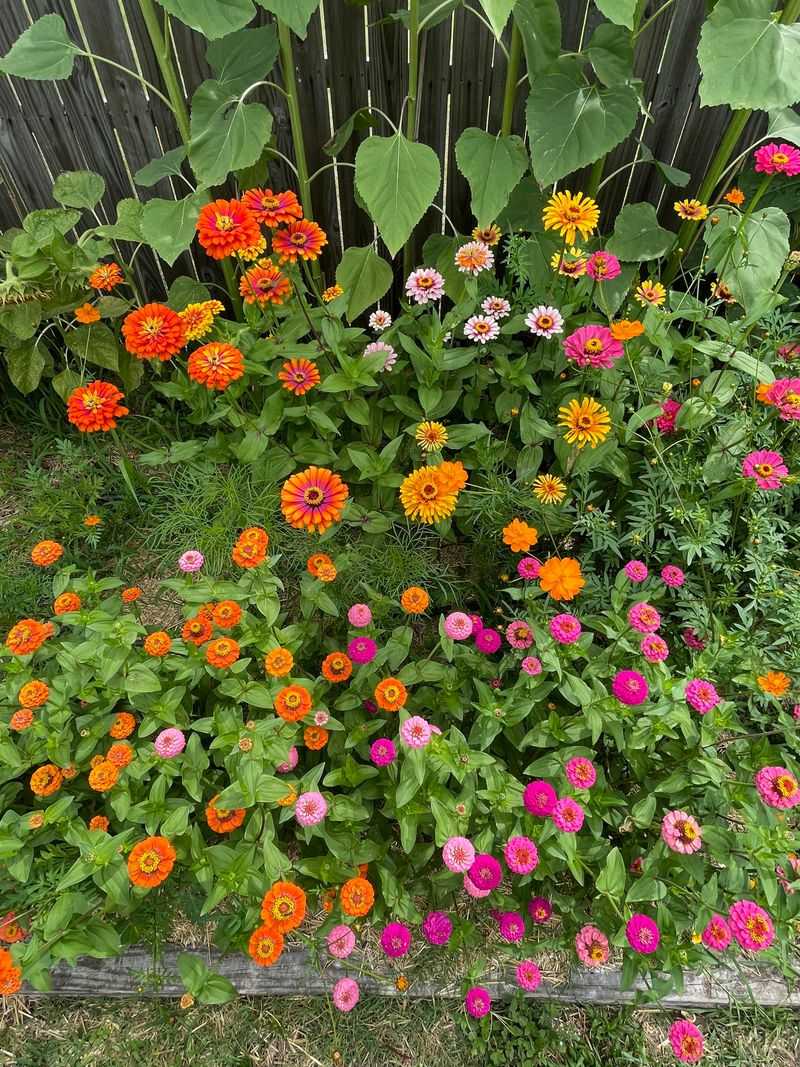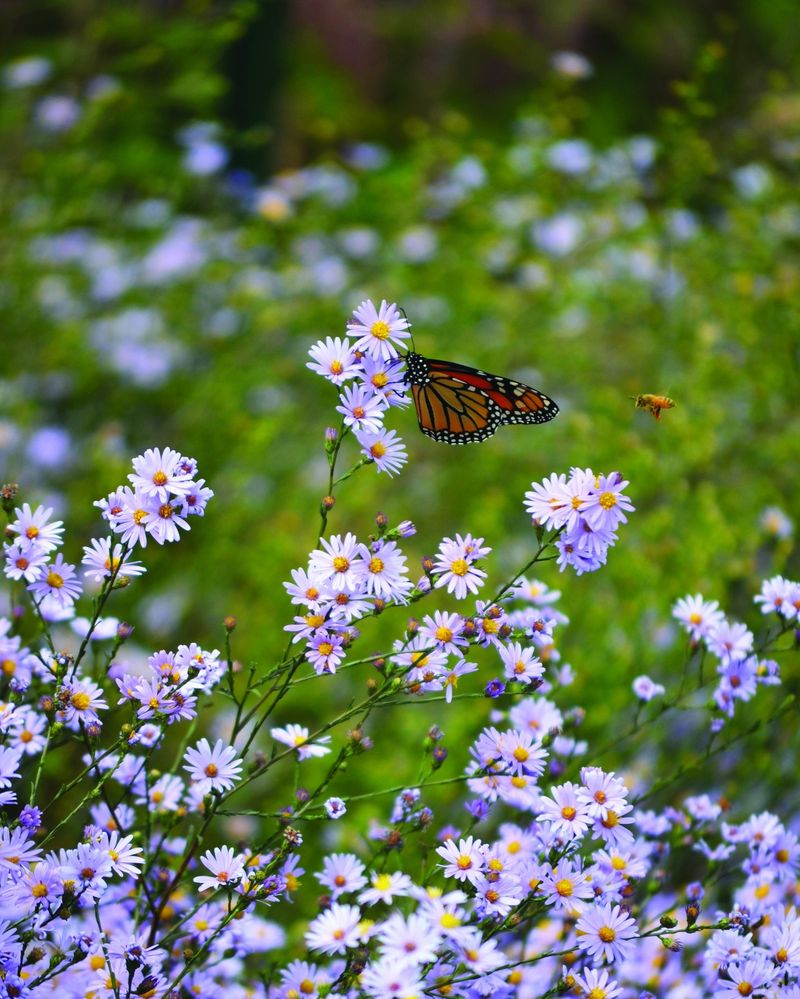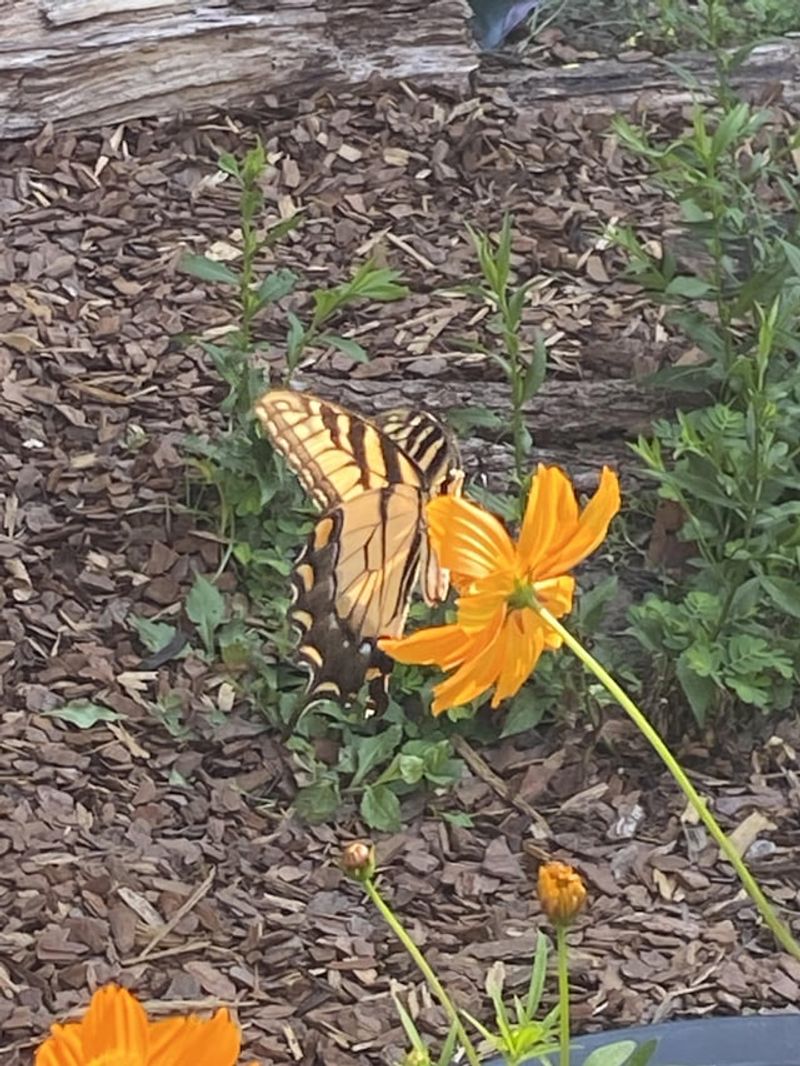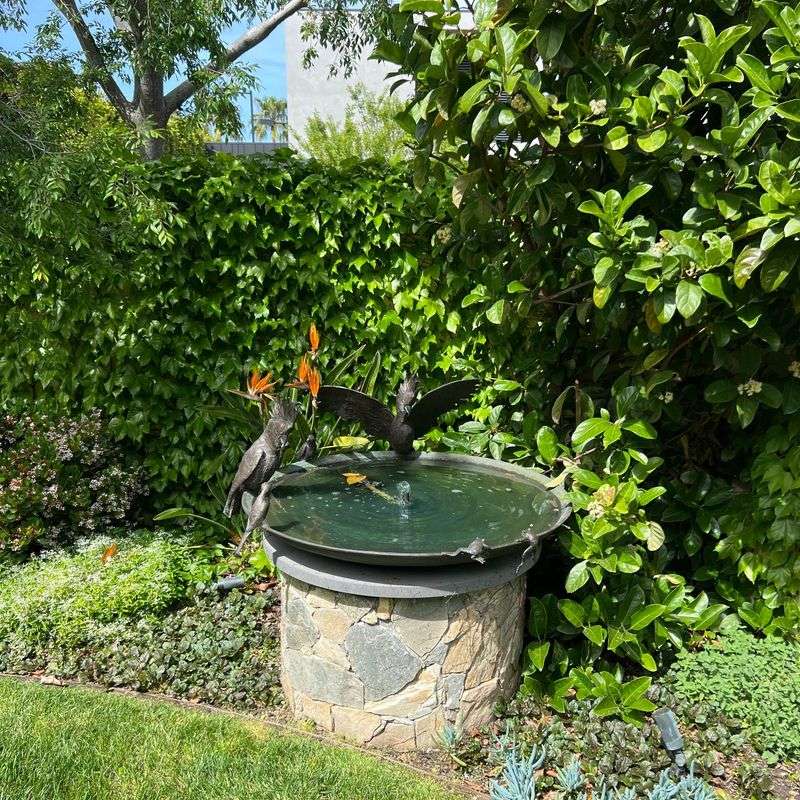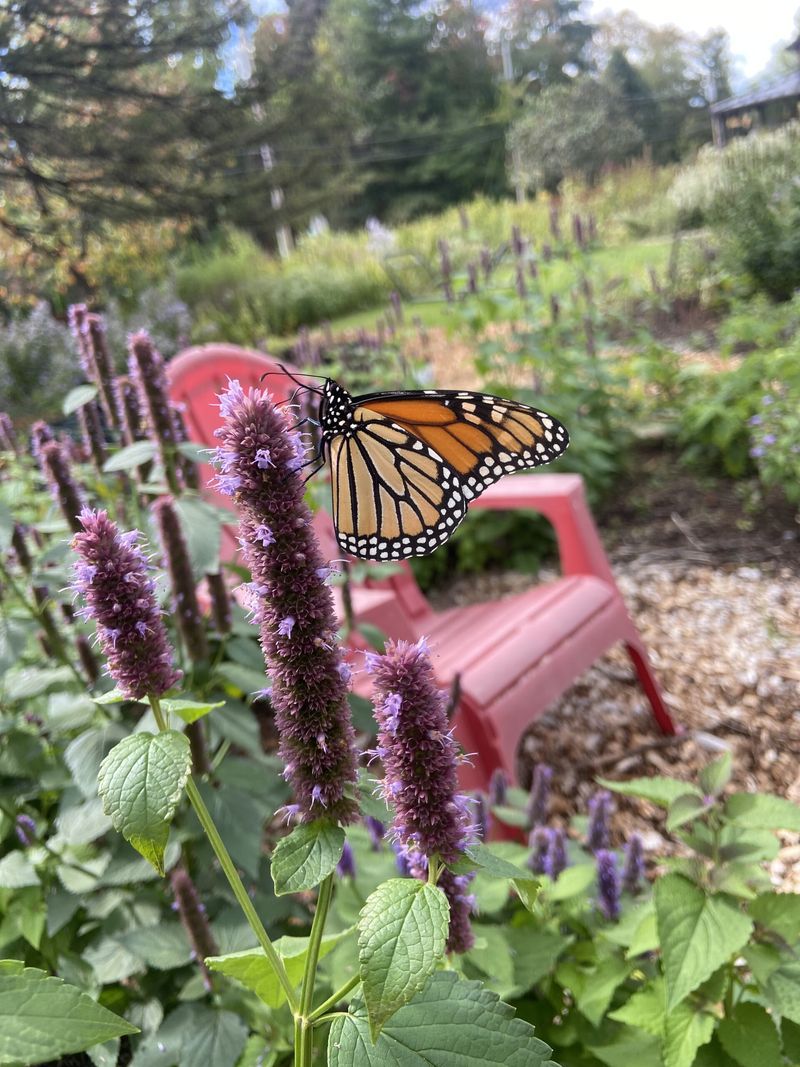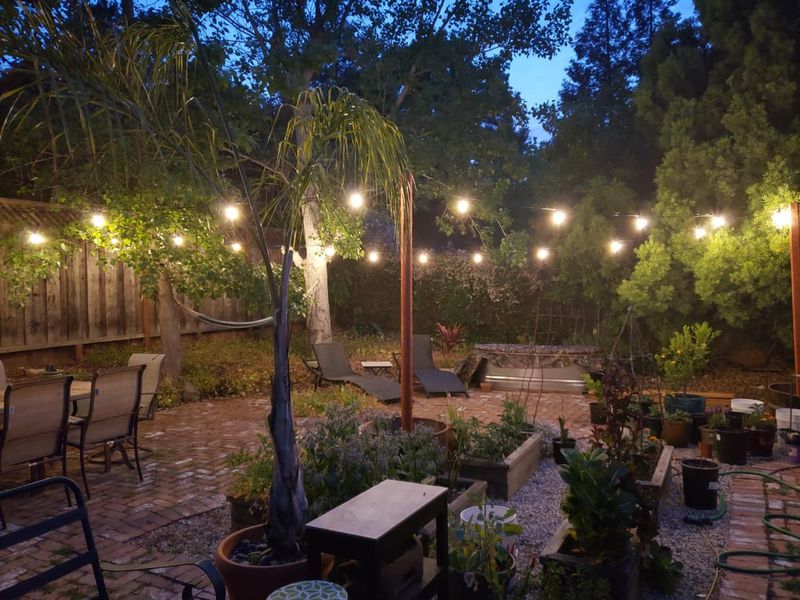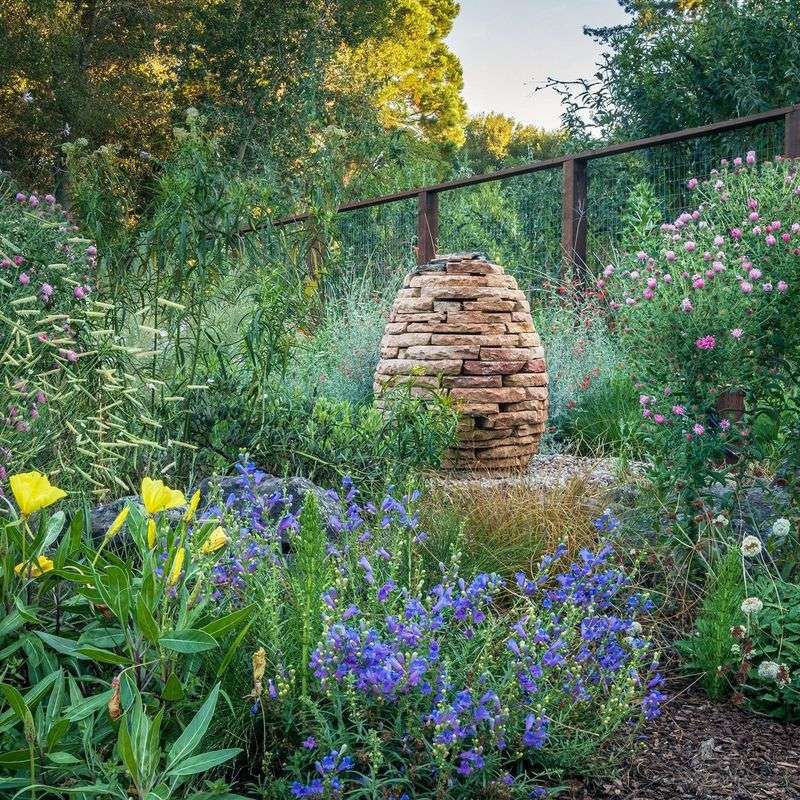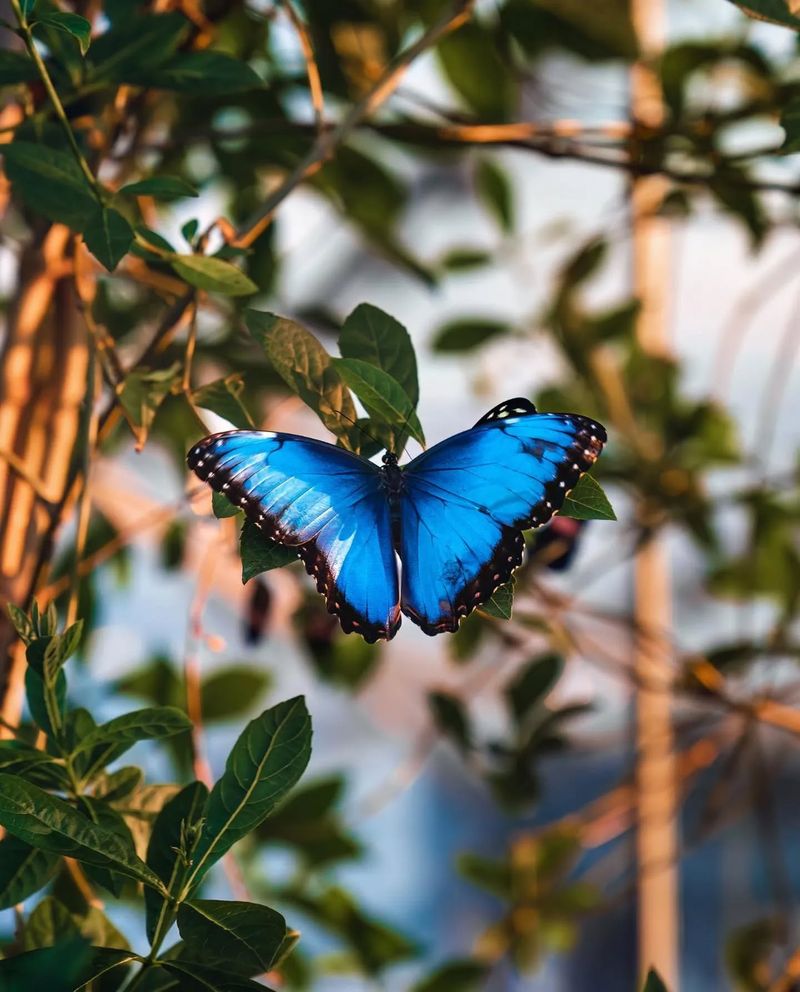It’s such a letdown when you’ve planted all the pretty flowers but the butterflies still don’t show up—I’ve been there too. Sometimes it’s just a small detail keeping them away, and once you tweak it, they come fluttering in like magic.
Over the years, I’ve picked up some eye-opening reasons that can make or break your butterfly traffic. A few of them caught me off guard, but the fixes are usually simple.
Let’s figure out what’s going on so your garden becomes their favorite hangout spot.
1. Missing Nectar Plants
Adult butterflies need nectar-rich flowers to survive. Without these natural food sources, they’ll simply fly elsewhere in search of sustenance. Popular butterfly favorites include coneflowers, zinnias, and butterfly bush.
To transform your garden into a butterfly magnet, plant clusters of colorful, nectar-rich flowers. Choose varieties with different bloom times to provide food throughout the growing season. Remember that flat-topped flowers make perfect landing pads for these delicate visitors.
2. Lack of Host Plants
Butterflies need specific plants to lay their eggs on – called host plants. Without these, female butterflies won’t stick around your garden. For example, monarchs require milkweed, while swallowtails seek out parsley, dill, and fennel.
Adding appropriate host plants creates a complete butterfly habitat. Research which butterfly species are native to your area and plant their preferred host plants. Yes, caterpillars will munch these plants, but that’s exactly the point – it’s how you’ll get more butterflies!
3. Pesticide Use
Chemical pesticides are butterfly killers, plain and simple. Even organic or “natural” insecticides can harm these sensitive creatures. Many gardeners spray to eliminate pests without realizing they’re also eliminating butterflies.
Switch to natural pest control methods like companion planting, hand-picking pests, or encouraging beneficial insects. If you must treat specific problems, use targeted approaches rather than broad-spectrum sprays. Creating a pesticide-free zone will quickly increase butterfly visits.
4. Too Much Shade
Butterflies are solar-powered creatures that need sunshine to regulate their body temperature. Gardens that are too shady simply don’t provide the warmth these cold-blooded insects require to function properly.
Identify the sunniest spots in your yard and concentrate butterfly-friendly plants there. Aim for at least 6 hours of direct sunlight daily in your butterfly garden areas. Adding flat rocks where butterflies can bask and warm up creates perfect sunning spots.
5. Windy Locations
Butterflies have delicate wings that make flying in windy conditions difficult and dangerous. Gardens in exposed, breezy locations won’t attract many butterflies, as they prefer sheltered spots where they can feed and rest safely.
Create windbreaks using shrubs, fences, or trellises to protect your butterfly garden. Position butterfly-friendly plants in sheltered pockets throughout your yard. Even a partial windbreak can dramatically increase butterfly visits by making your garden a safe haven.
6. Lack of Puddling Areas
Male butterflies engage in a behavior called “puddling” – gathering at damp areas to extract minerals from moist soil. These nutrients are essential for reproduction. Without puddling spots, your garden lacks a crucial butterfly attraction.
Create a butterfly puddling station by filling a shallow dish with sand, adding rocks for perching, and keeping it moist. For extra appeal, add a pinch of salt or some overripe fruit. Place it in a sunny, protected spot and watch butterflies gather!
7. Over-Manicured Spaces
Perfectly manicured gardens with no natural areas or “messy” spots often lack butterfly appeal. Butterflies need diverse habitats including tall grasses, leaf litter, and natural brush piles for shelter and overwintering.
Designate a section of your yard as a more natural area. Leave fall leaves in some garden beds and create brush piles in discreet corners. Consider leaving some lawn areas unmowed to allow native flowers to bloom. These small wild touches make a huge difference.
8. Wrong Flower Colors
Butterflies are particularly attracted to bright colors like purple, red, yellow, and orange. Gardens filled with only white, pale pink, or exclusively green plants won’t catch a butterfly’s attention from afar.
Incorporate vibrant blooms throughout your garden spaces. Purple coneflowers, bright orange zinnias, and golden black-eyed Susans are butterfly magnets. Plant these colorful flowers in clusters rather than singles – larger color blocks are more visible to passing butterflies.
9. Limited Blooming Seasons
Gardens that only bloom in spring or midsummer provide limited food sources. Butterflies need nectar throughout their active season, which typically runs from spring through fall depending on your climate.
Plan your garden for continuous blooming by researching flower succession. Early bloomers like lilac and phlox, midsummer stars like echinacea and butterfly bush, and fall flowers like asters and goldenrod create an unbroken nectar buffet. This season-long approach keeps butterflies returning.
10. Exotic Plant Dominance
Many non-native ornamental plants offer little value to local butterflies. Native butterflies have evolved alongside native plants and often can’t recognize or use exotic species for food or reproduction.
Incorporate more native plants into your landscape. Research which plants are indigenous to your specific region. Even adding just a few key native species can dramatically increase butterfly activity. Native plant nurseries and extension offices can provide recommendations suited to your exact location.
11. Water Features Too Deep
Butterflies need water but can’t use deep bird baths or ponds. They risk drowning in conventional water features without safe, shallow drinking spots.
Create butterfly-friendly water sources by placing wet sand or pebbles in shallow dishes. Another option is to arrange rocks in existing water features to create safe landing spots. Misting plants in the morning also provides water droplets that butterflies can easily drink from without danger.
12. Isolated Garden Location
Gardens that exist as isolated pockets of habitat in otherwise butterfly-unfriendly neighborhoods might not be discovered. Butterflies need connected corridors of suitable habitat to travel safely between areas.
Talk with neighbors about creating butterfly-friendly spaces in their yards too. Even small stepping-stone habitats can connect isolated gardens. Community butterfly gardens in parks or schools can also help create habitat networks that make your garden more accessible.
13. Night Lighting Issues
Excessive outdoor lighting can disrupt butterfly behavior and breeding cycles. Many species navigate using natural light cues, and artificial lighting confuses them and makes them vulnerable to predators.
Reduce unnecessary outdoor lighting, especially around butterfly habitat areas. If security lights are needed, consider motion sensors or timers. Using amber or warm-colored LED bulbs rather than bright white or blue lights also minimizes disruption to butterflies and other beneficial insects.
14. Climate Stress
Gardens lacking protection from extreme weather create stressful environments for butterflies. Hot, dry conditions without shelter or moisture can drive butterflies away in search of more hospitable locations.
Add features that moderate microclimate extremes. Birdbath fountains increase humidity, while shade trees provide cool refuge during heat waves. Installing rain gardens helps capture moisture during dry spells. These climate-buffering elements make your garden a butterfly sanctuary even during challenging weather.
15. Butterfly Predator Presence
Sometimes the problem isn’t what’s missing but what’s present – too many butterfly predators. Birds, spiders, wasps, and certain insects prey on butterflies and their caterpillars, potentially reducing populations in your garden.
Create protective cover by including dense shrubs where butterflies can hide. Plant extra host plants so predation doesn’t eliminate all caterpillars. Avoid bird feeders directly in butterfly garden areas. Balance is key – you want some predators for a healthy ecosystem, but not so many that butterflies can’t thrive.

